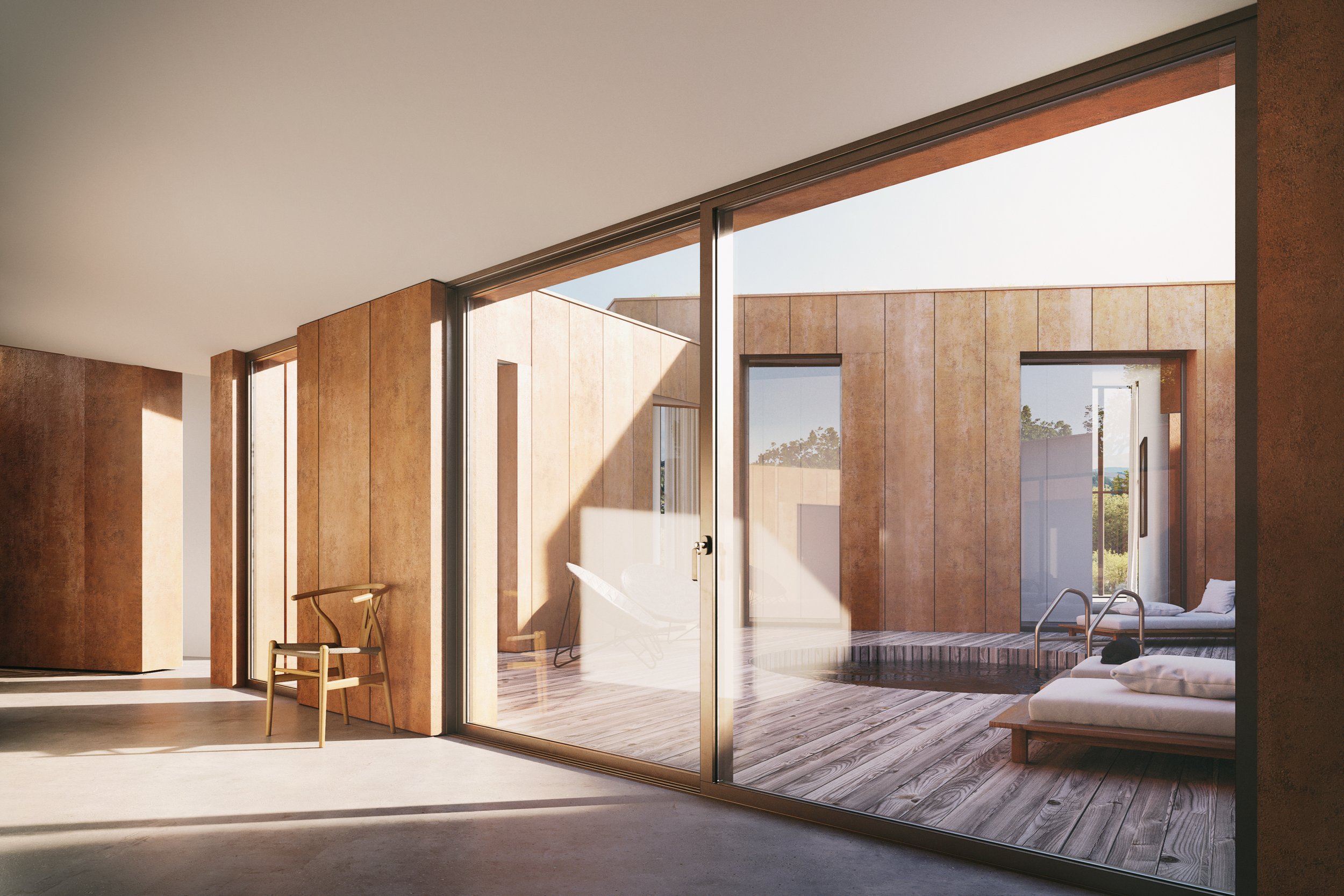AR Design Studio's Latest Project - The Water Lily House
AR Design Studio secure first ever Paragraph 84 (formerly Paragraph 80) approval in the Winchester District.
On 22 September 2022, an appeal was allowed granting planning permission for a floating dwelling in the form of a Water Lily pursuant to paragraph 84 (formerly Paragraph 80) e) of the National Planning Policy Framework (NPPF, 2021).
Fondly named 'The Water Lily House’ this project is award winning Winchester based Architects AR Design Studio’s latest planning success. The appeal decision follows a lengthy and challenging planning process, but demonstrates that with a strong design concept and an experienced and tenacious multi‐disciplinary team, applicants can, in the face of a resistant planning authority, secure planning permission for a bespoke piece of residential architecture.
Local planning policy is usually heavily weighted against residential development in the countryside and for good reason; the United Kingdom retains great areas of green open space.
Paragraph 84 of the NPPF, which has existed in various guises for many years, permits the erection of isolated homes in the countryside where one of five planning tests are met. However the bar for gaining permission is set very high, requiring a design approach of the very highest quality.
This decision is significant as it is the first paragraph 84 dwellinghouse to gain permission within the administrative area of Winchester City Council, and the first within Hampshire, possibly the country, following the revision to the NPPF in July 2021.
"The Water Lily House secured permission as the Inspector deemed that the applicants had clearly demonstrated that in accordance with criterion e) of paragraphs 80, the site was ‘isolated’, the design was truly outstanding reflecting the highest standards in architecture, would help raise standards of design more generally in rural areas, would significantly enhance its immediate setting; and would be sensitive to the defining characteristics of the local area.
The Appeal Inspector describes the Water Lily House as...
“a synthesis of environmentally friendly, sculptural architecture that sits sensitively and subtly in the landscape. Inspirational and a show case of what can be done."
And went on to say...
"It would be so unique and interesting that it would provide inspiration to other designers who may wish to replicate or build upon the concepts employed."
"it would have a unique, whimsical, and attractive architectural appearance which would reflect the aquatic context and impart an elegant, balanced and sculptural quality of a high order."
The Water Lily House floats on a disused reservoir that once serviced the surrounding agricultural fields.
Considering the lack of biodiversity on the reservoir, the design team saw an opportunity for the lake to become an integral asset to the site by improving the quality of the existing reservoir and the relationship between land and water.
An emphasis on biodiversity also informed the initial concept, leaning heavily on a symbiotic relationship between the building and site. This has been distilled within the design process, and from this the form of the water lily emerged; the plant itself playing an important role in supporting and enhancing the ecosystems of pond life.
The scheme mimics the lily’s qualities. The leaves of the plant float on the water’s surface shading the area below. This helps manage temperature extremes, reduce algae growth and protect pond life from predators. The lily serves to protect the life which sustains it, and the house aims to replicate this behaviour.
The siting of the proposal offers the opportunity to take full advantage of the 360-degree panoramic views of the site. The design responds with a radial abstract form, comprising of a series of compartmentalised ‘pods’. Each is orientated to capture specific views within the site that are further enriched by a detailed landscape and lake design scheme.
The primary living spaces, the lounge/kitchen/dining and the sitting room, have long views over the lake and towards the open countryside beyond. The two bedroom ‘pods’ face the more intimate gardens, allowing privacy through shorter views. The guest bedrooms to the north will face a sculpture garden with an associated boardwalk, which is screened from the main road by an existing hedge as well as proposed planting. To the south of the house, a swimming pond links to a floating reed bed and jetty, allowing boats to be moored. Extensive full height glazing allows connectivity between the internal and external spaces, whilst feature windows frame individual aspects of the surroundings.
At the centre of the house is the courtyard and plunge pool, the main circulation corridor envelopes and looks into this contemplative space. The roof from each of the pods tapers towards this courtyard, allowing it to open up towards the sky. The space offers a sense of intimacy that contrasts with the expansive views over the reservoir offered by the living spaces in the house.
The access to the house is situated at the eastern point of the reservoir, allowing a direct link to the main drive and a proposed subterranean garage. The garage is hidden within the existing bank of the reservoir, minimising the visual impact on the site. The house itself is accessed via a footbridge leading from an entrance courtyard adjacent to the garage.
The building responds to the site and the defining characteristics of the local area with a contemporary approach to the surrounding agricultural vernacular. Metal cladding was explored, a bronze tone having a distinctive and warm appearance. Though not an exact material match, the tones were found to correspond with the existing buildings. The suitability of metal cladding considering the moist environment was also researched, with the proposed material controlling the patina on its surface, avoiding corrosion of the material itself.
To compliment this, timber details are used, mimicking timber cladding commonly found in the local context. A natural material that is susceptible to weathering, the saturation of the timber will mute over time while the durability is maintained; eventually reflecting the tones and hues of the landscape setting.
Detailed design is now underway including the complex civil engineering challenges that a floating house poses. Construction of the house is due to commence in 2023.
Landscape Drawing produced by Ibbottson Studios.
All visuals are copyright of NuMa, unless otherwise stated.
Design Team:
Marine Engineers ‐ Keel Marine
Structural Concept – Eckersley O’Callaghan
Energy Consultants – Mesh Energy
Landscape Architect – Terra Firma
Landscape Architect (Masterplan) - Mike Ibbotson
Planning Consultant – Fredrick Adam
Ecology – Arcadian Ecology & Consulting
Environmental Consultant – Earthcare Technical
AR Design Studio is an RIBA chartered architect’s practice, based in Winchester, Hampshire, specialising in elegant and imaginative contemporary new homes, extensions, interiors and multi-plot developments. AR Design Studio’s architectural expertise and flair has been recognised by winning a number of prestigious industry awards including the British Home Awards 2020, UK Property Awards 2019, Royal Institute of British Architects (RIBA) South East Award 2018, the RIBA South West Award 2017 and the American Architecture Award 2017, in addition to being longlisted for Grand Designs House of the Year Award 2018. With a comprehensive knowledge of planning, AR Design Studio has built a stunning portfolio of bespoke residential projects.
For further information contact info@ardesignstudio.co.uk








